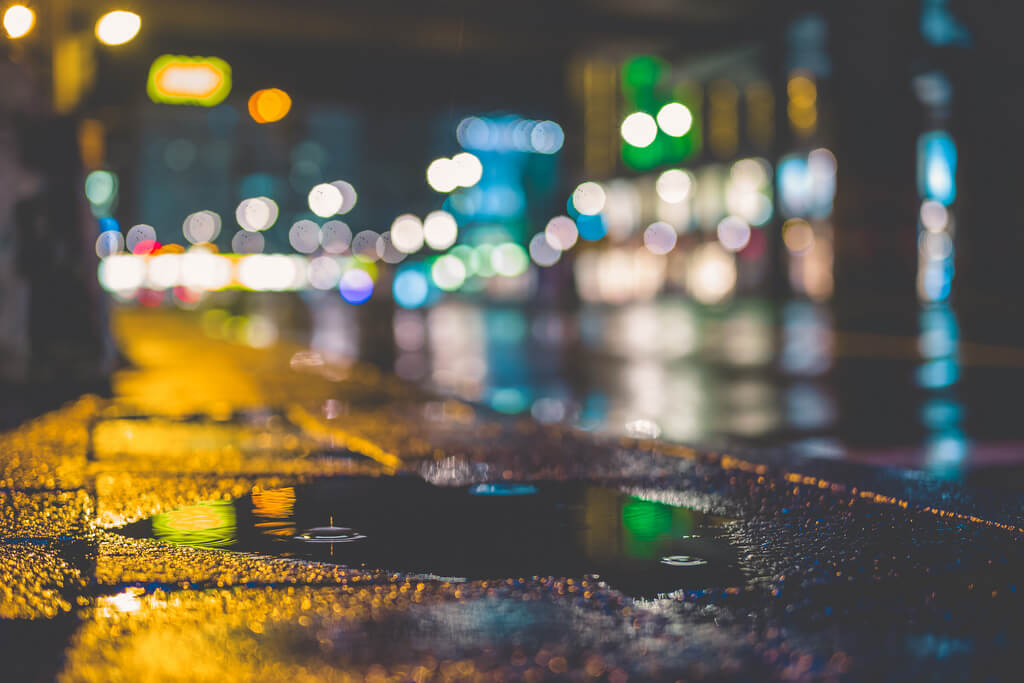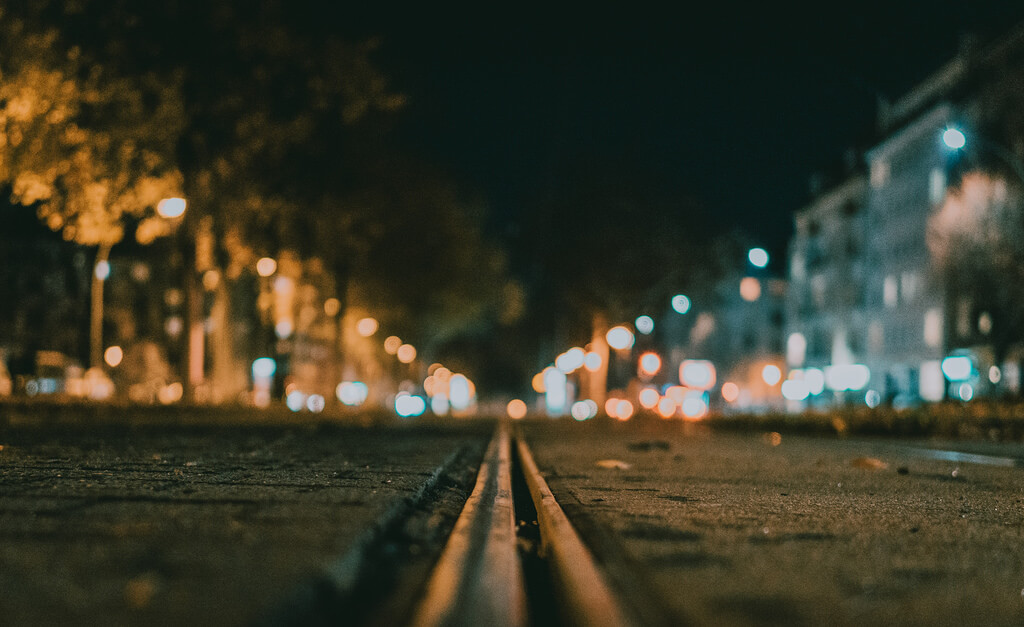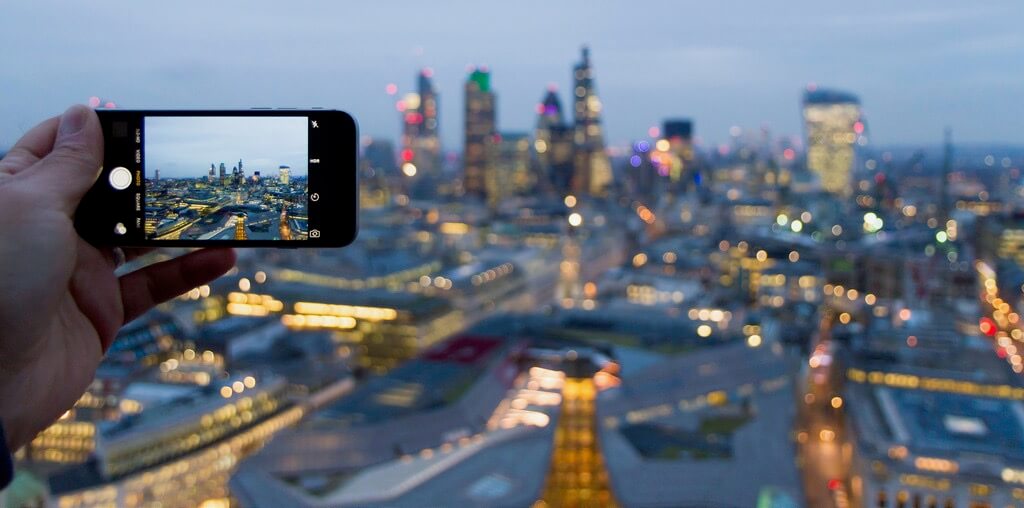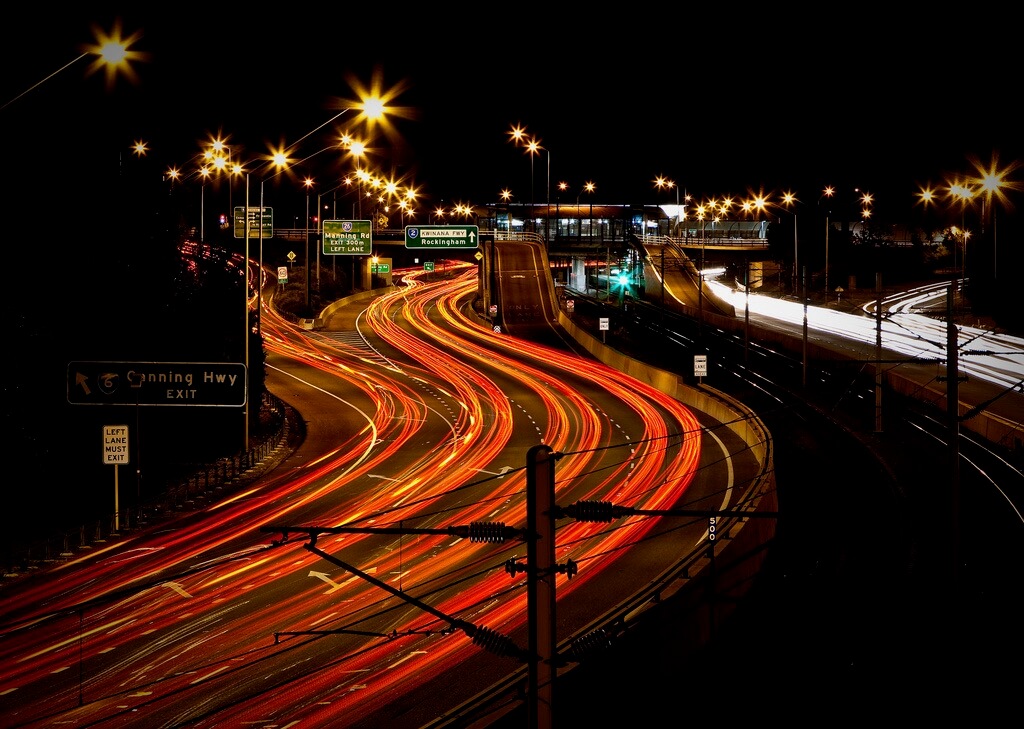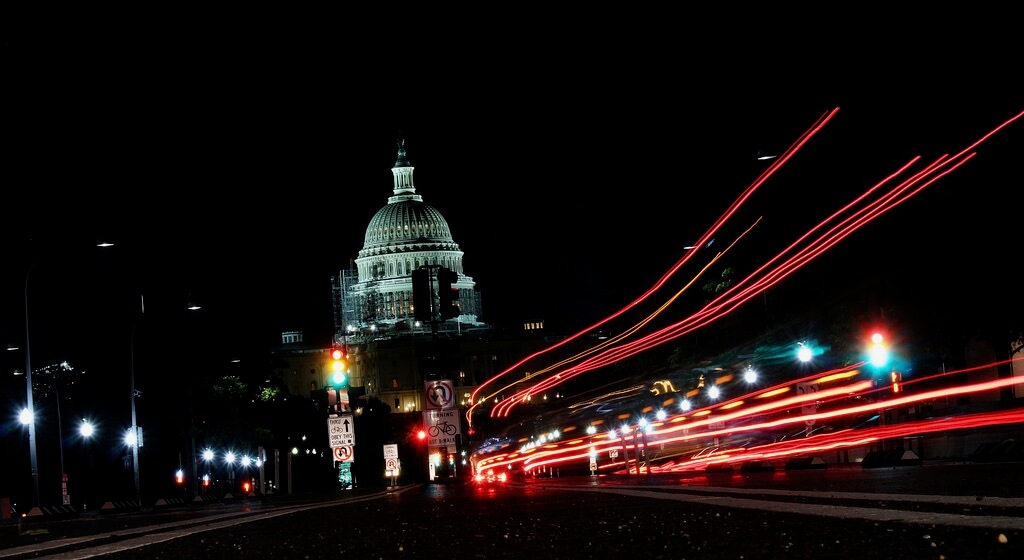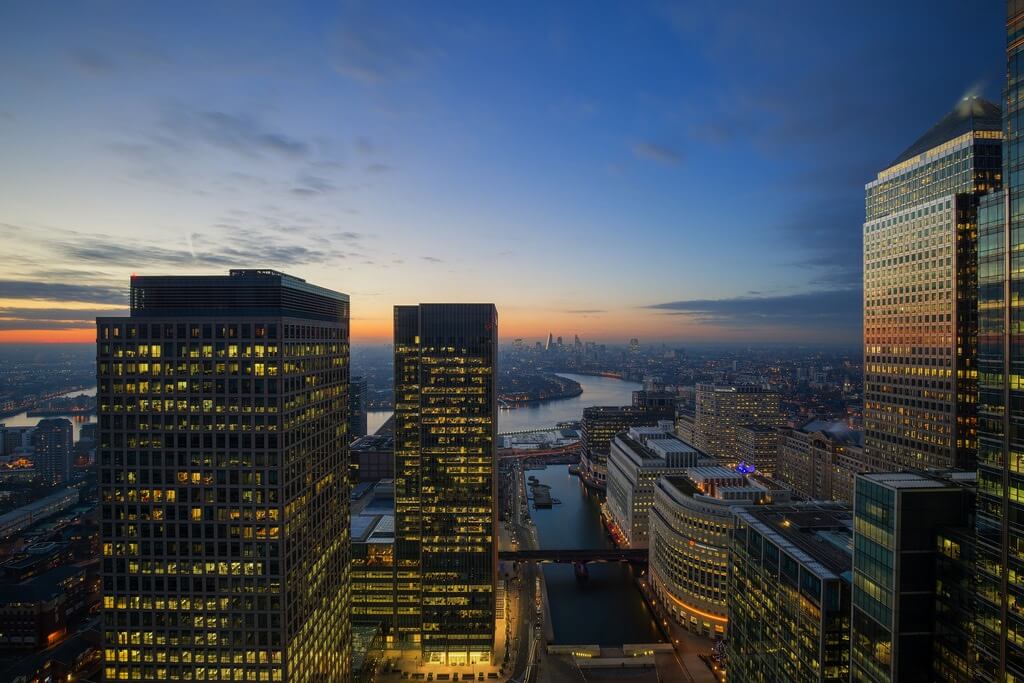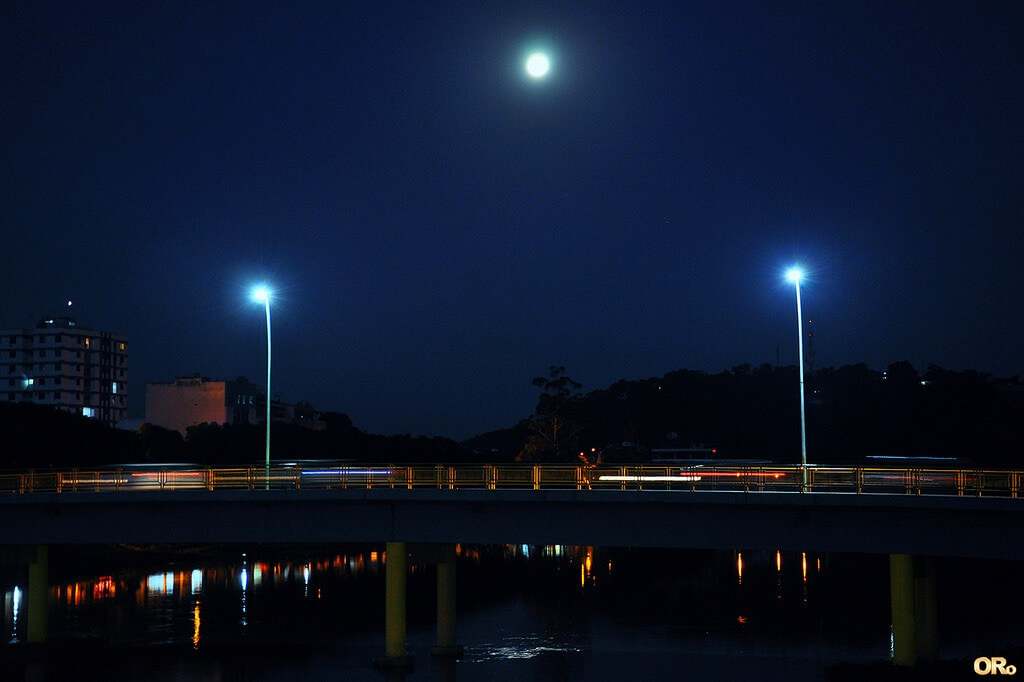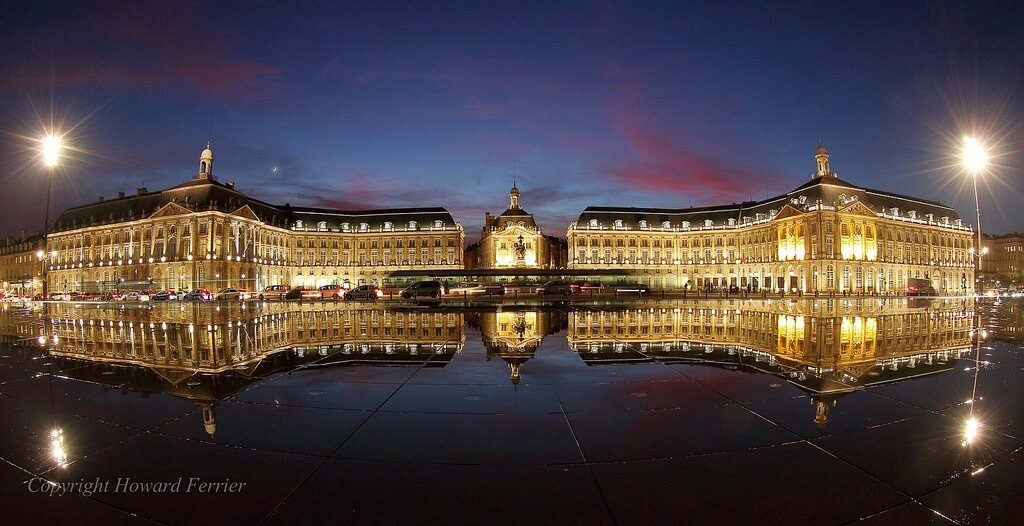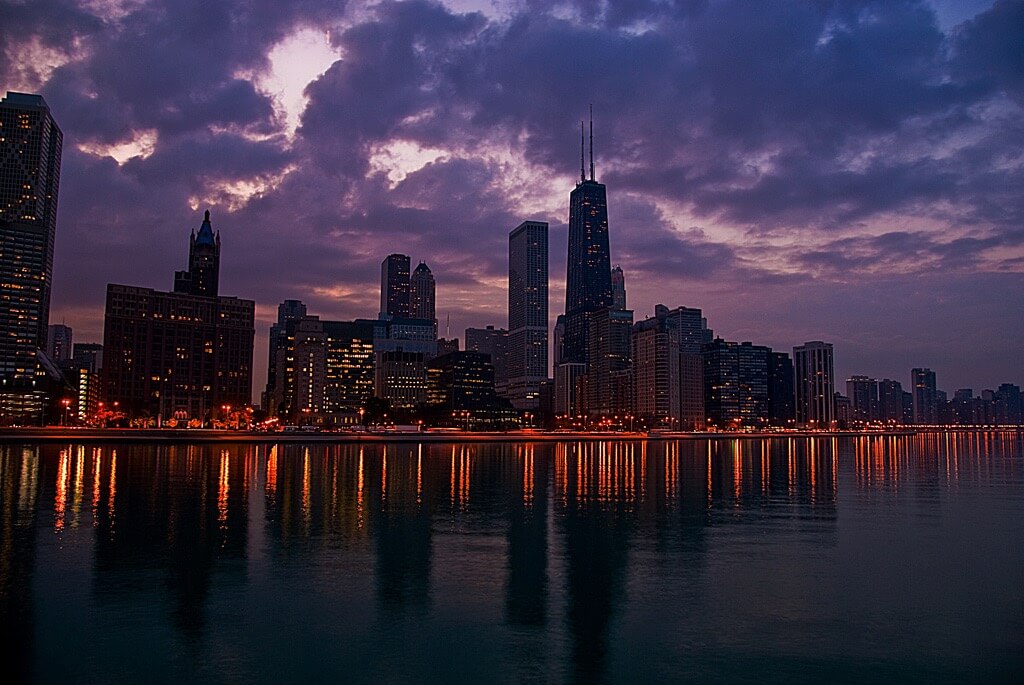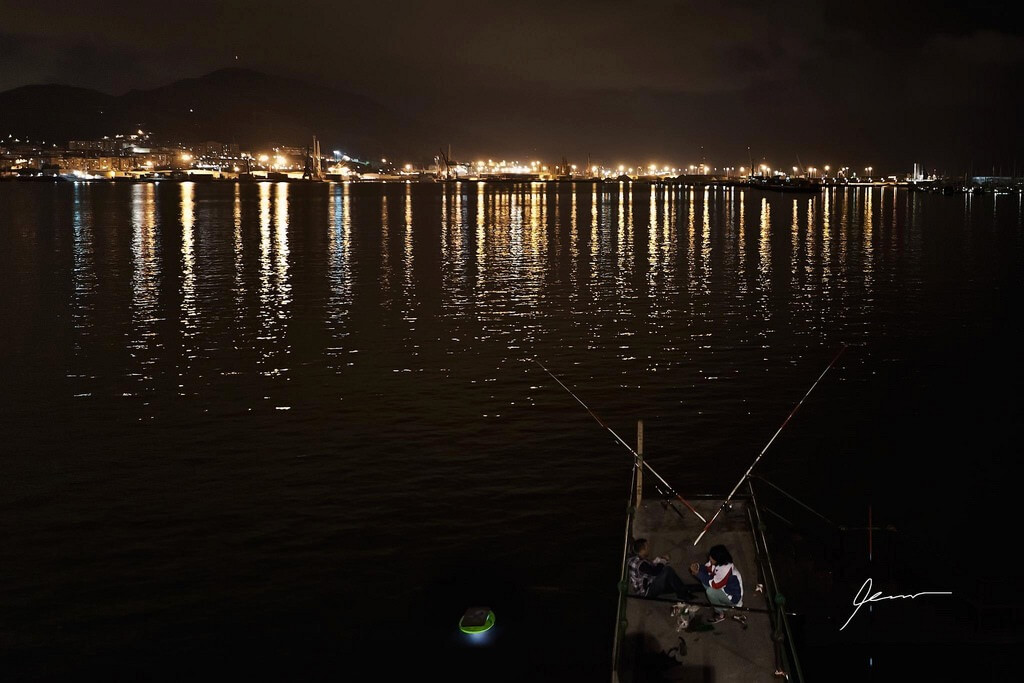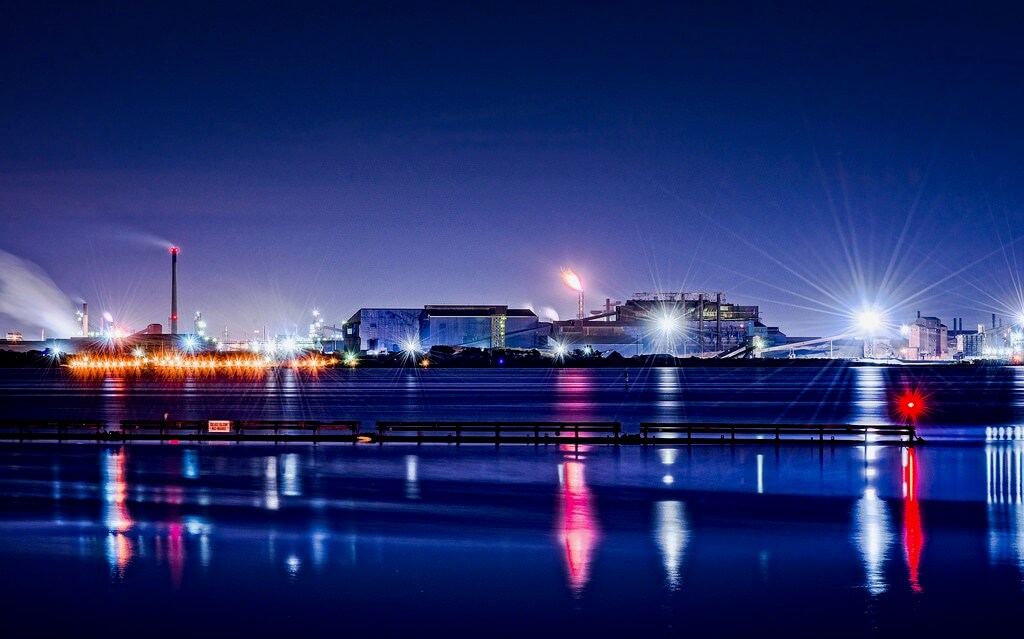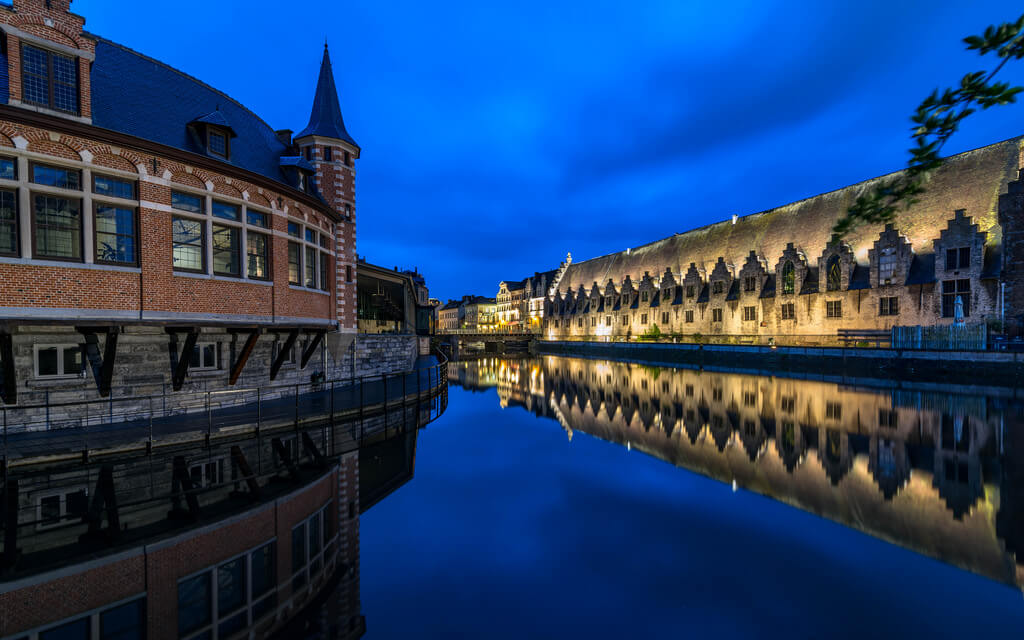When you’re new to photography, the night can be an intimidating time to go out shooting, as it requires more skill and knowledge of your camera. It’s a learning curve worth getting through, though. The night is full of interesting and beautiful scenes, especially in the city.
The more you practice night photography, the better you’ll get at it. But besides practicing, you can greatly improve your night photography by getting a tripod. While you can still get cool photos without one, it’ll cut down on blur and allow you to be more flexible. You can get a basic Amazon tripod for under $25. Next to buying a camera, it’s be the best investment you can make in your photography.
Ideally, you should also get a remote release to further minimize blur. You can buy them pretty cheap–less than $10 for a basic one–but if your budget is already stretched with the tripod, you can use a two-second timer instead. Though a timer isn’t as quick or convenient as a remote release, it’ll give you the same sharp results.
Once you have a tripod, you can start experimenting with ISO, shutter speed, and different light sources, from bright skyscrapers to blinking traffic lights. In general, you’ll want a low ISO (50-200) to minimize noise, along with a slow shutter speed to bring in more light.
There’s no “perfect” shutter speed to aim for. You might set it at 1 second, 10 seconds, or 30 seconds, depending on the light source. You can even get into ultra long exposure photography with exposure times ranging from several minutes to a few hours. (You’d definitely need a remote release for that, though.)
After you’ve sorted out these technical details, the night becomes rich with possibility. Cities that look grungy or bland during the day can turn into awe-inspiring subjects at night. If you’re still feeling frustrated after taking a few photos, try out one the following ideas.
City Light Photography Ideas
Bokeh
City lights, like Christmas lights, work great with bokeh. To create a bokeh effect, use a shallow depth of field to blur the city lights. You can focus on something in the foreground, like a person or a rain puddle, or let the blurry city lights fill the frame with their soft beauty.
Federica Giordano – window on the world
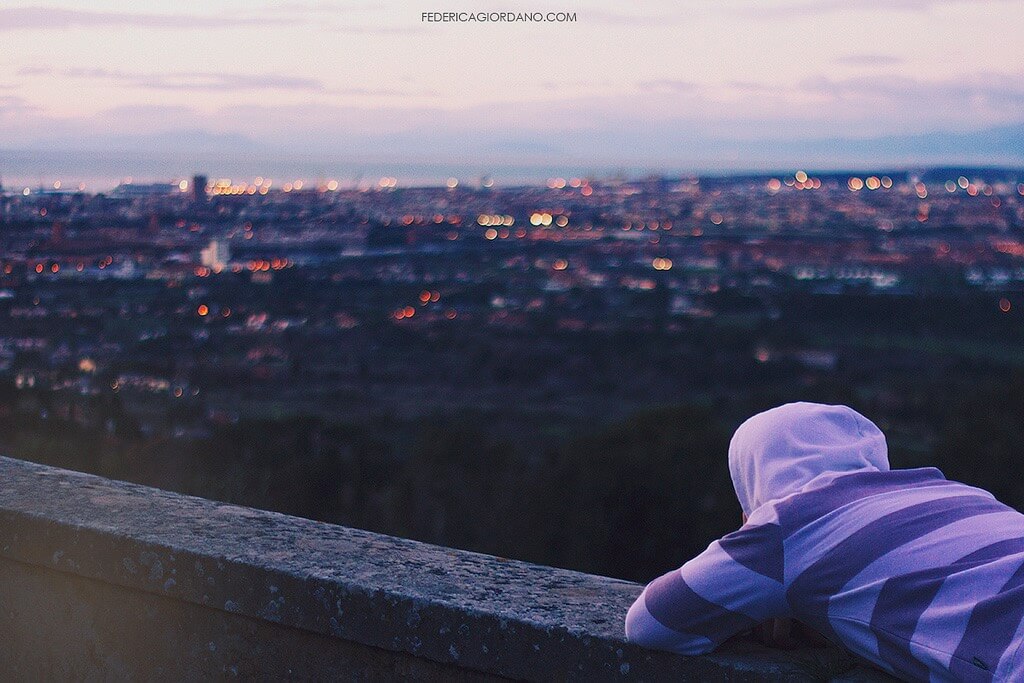
Enrique EKOGA – Amsterdam bokeh
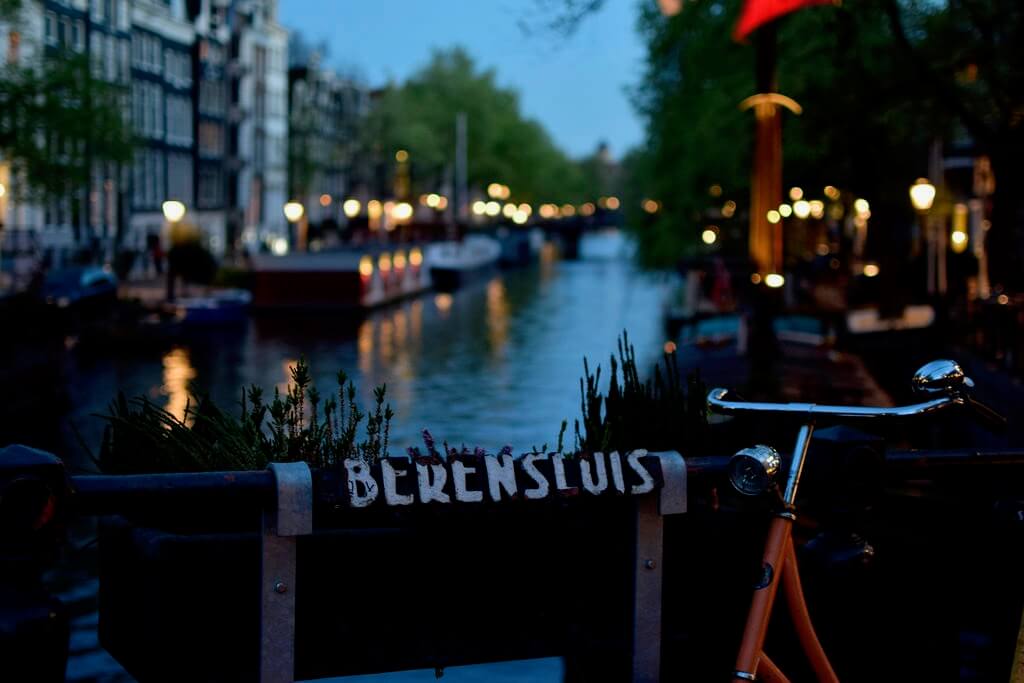
Federica Giordano – Lost in all the city lights
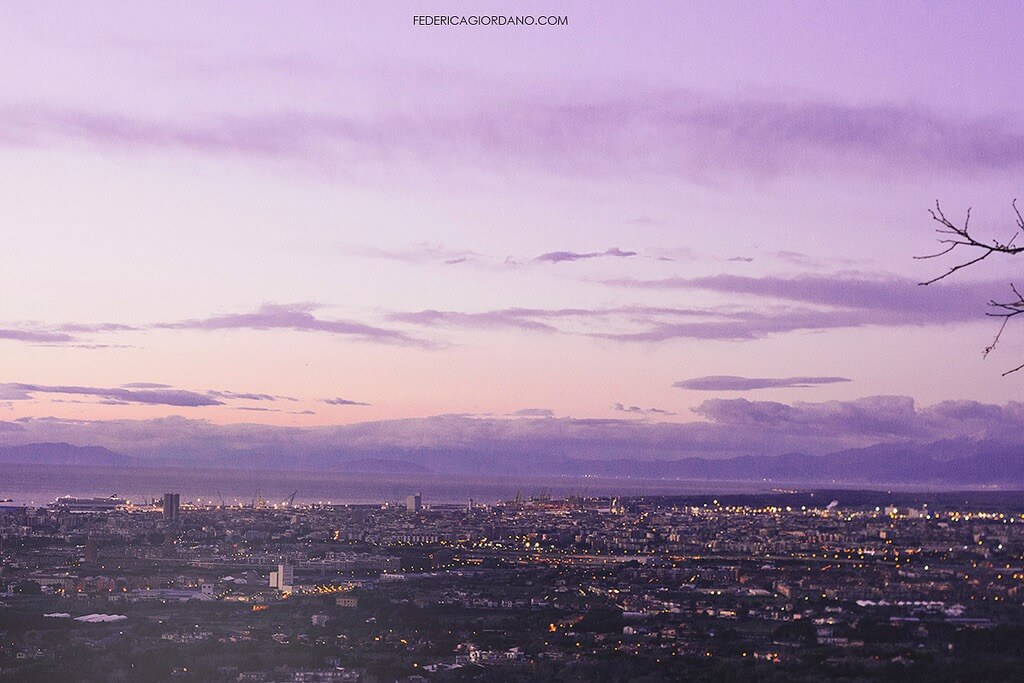
Light Trails
Light trails from cars, trams, or even boats can give your photo a surreal edge. They’re easy to capture, too. Just set your shutter speed at 3 seconds or longer, find something bright that’s moving, and snap a photo. You might be amazed by the resulting image.
David Kosmos Smith – Downtown Atlanta
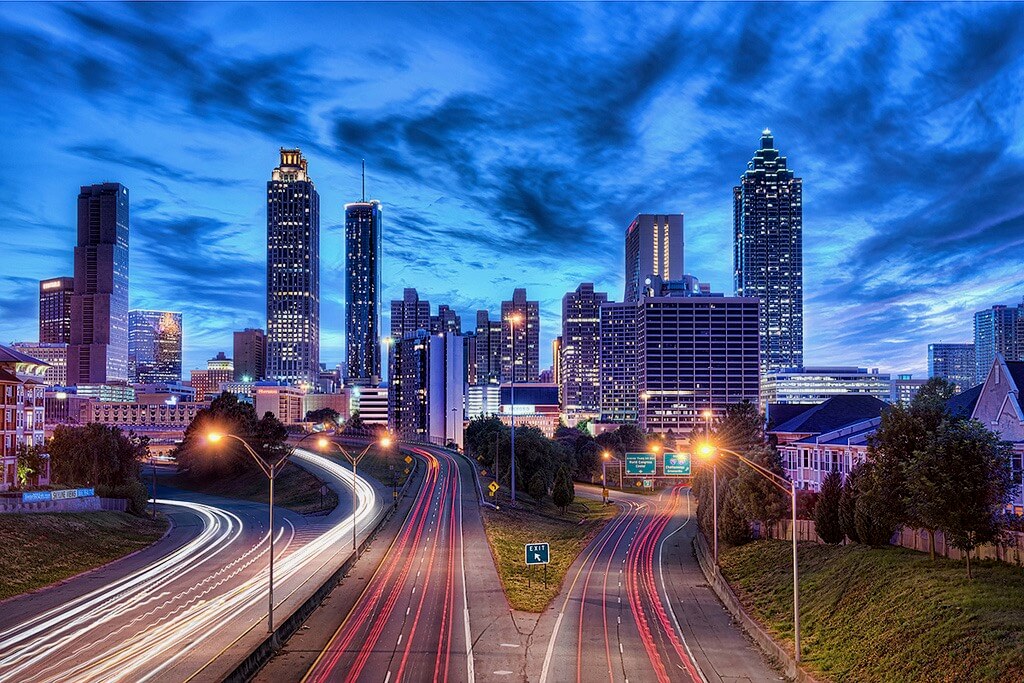
Giovanna Tucker – London Tower Bridge Light Trails
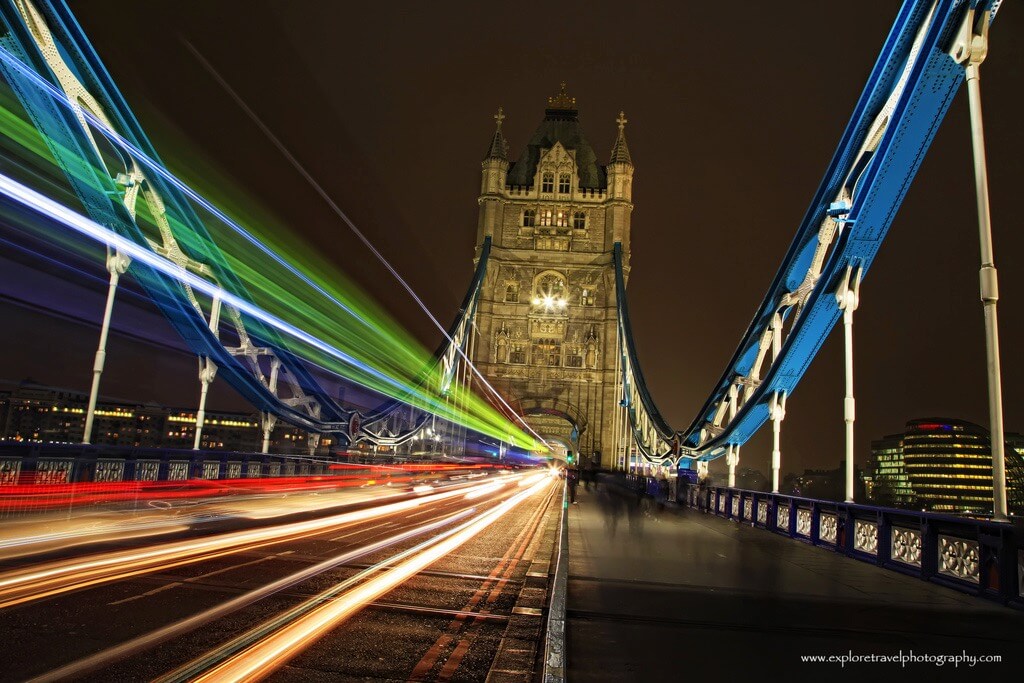
ilirjan rrumbullaku – Highway to Chicago
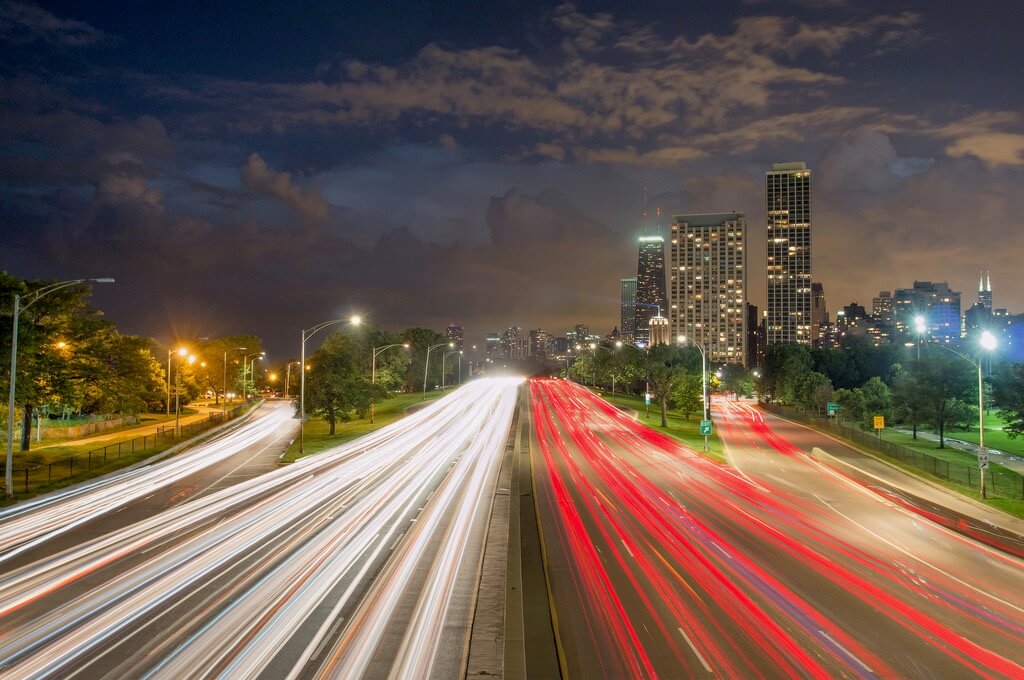
Birds-Eye View
If you’ve ever flown into a city at night, you know how spectacular city lights can look from above. Thousands of twinkling lights stretch to the horizon, bright against the night sky. Fortunately, you don’t need a plane to photograph city lights from above. You can get great shots from a skyscraper or tower, too.
Christopher – A View To Remember
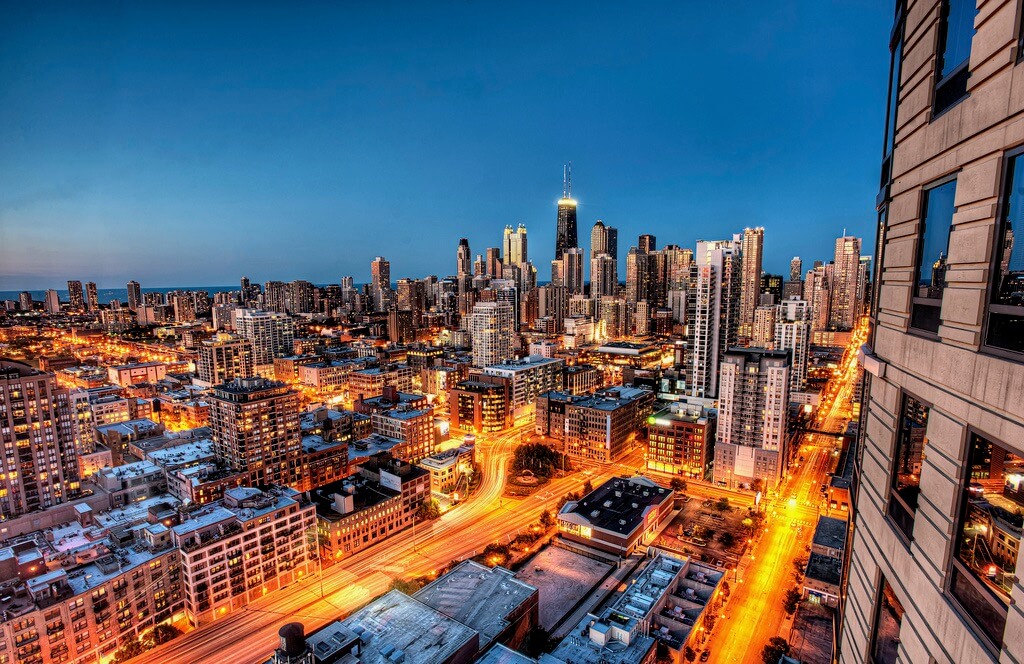
Paul Shears – The Night Begins
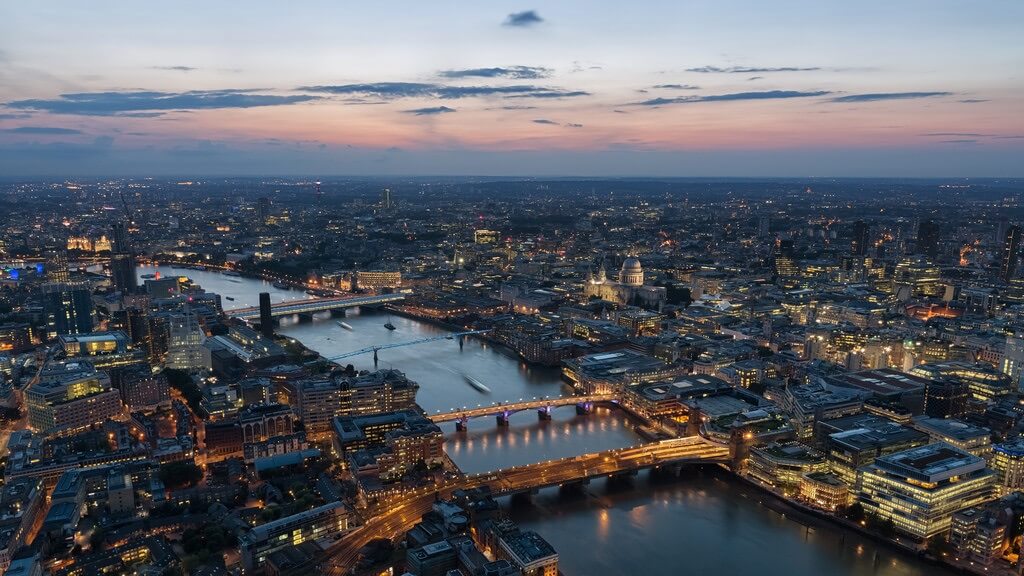
GeorgeVog – Spring in Athens – Greece
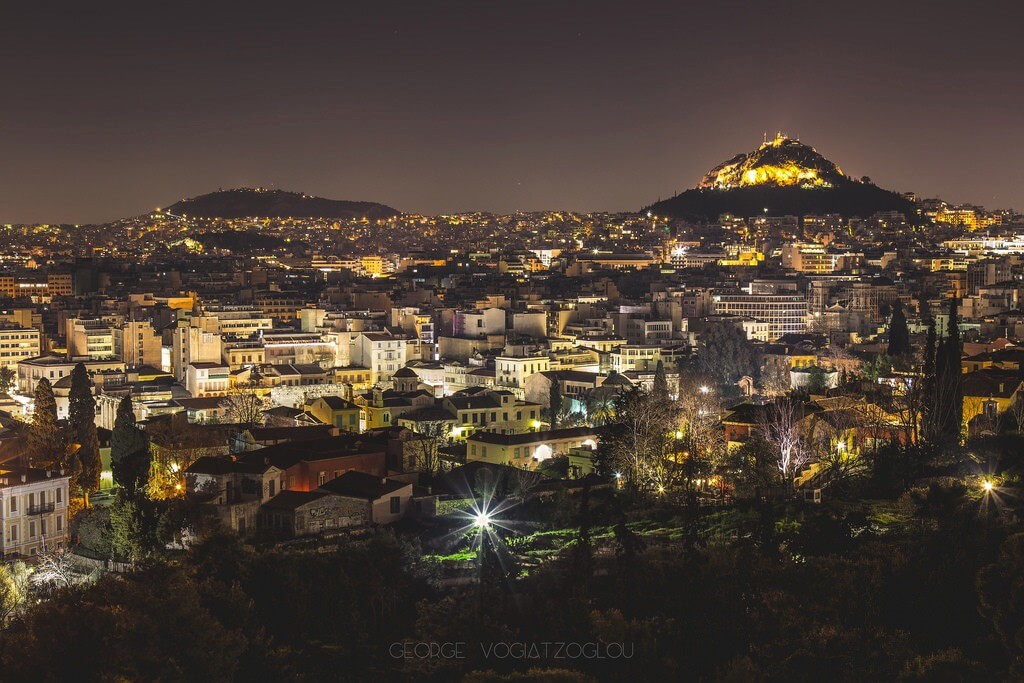
ilirjan rrumbullaku – Sparkling Tower
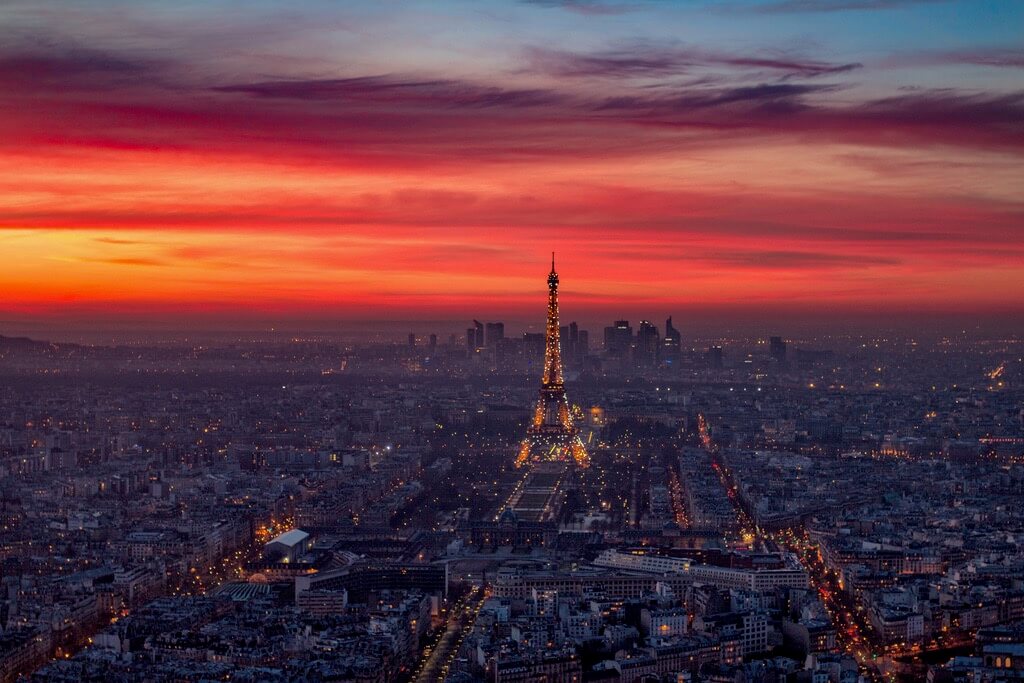
Symmetry
Symmetry is a common sight in many cities. Once you start looking for it, you’ll discover it everywhere. Buildings, street lights, and trees-lined parks all have symmetry. These patterns can be even more striking at night, when the darkness limits distractions. The viewer’s eyes are led straight to the shining lights and symmetry of the city.
Paul Shears – The Light At The End
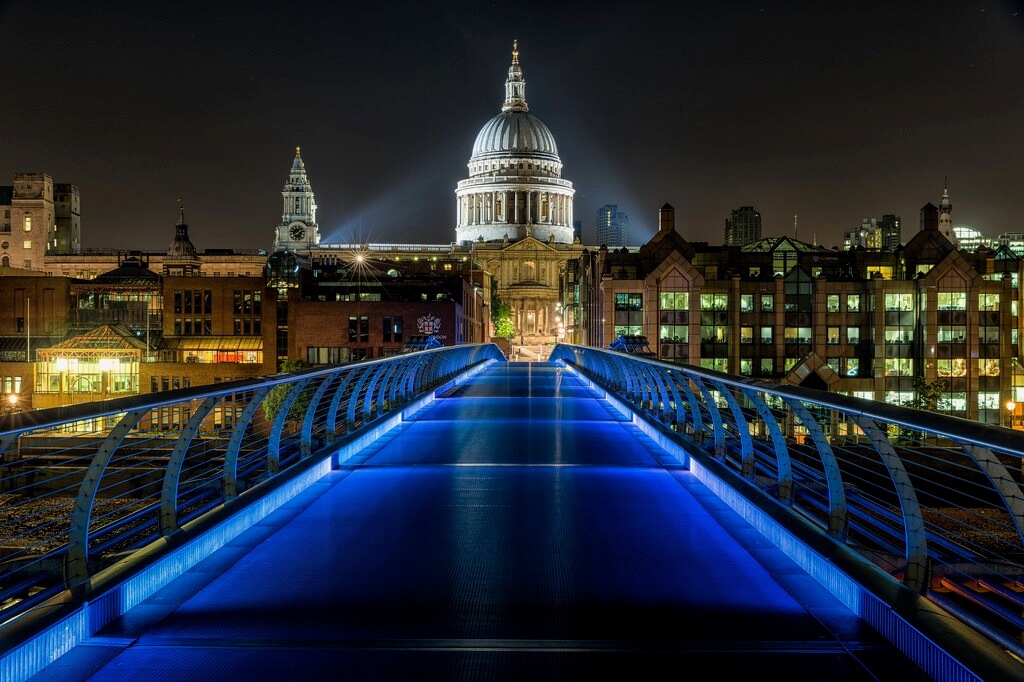
kuhnmi – Illuminated Eiffel-Tower
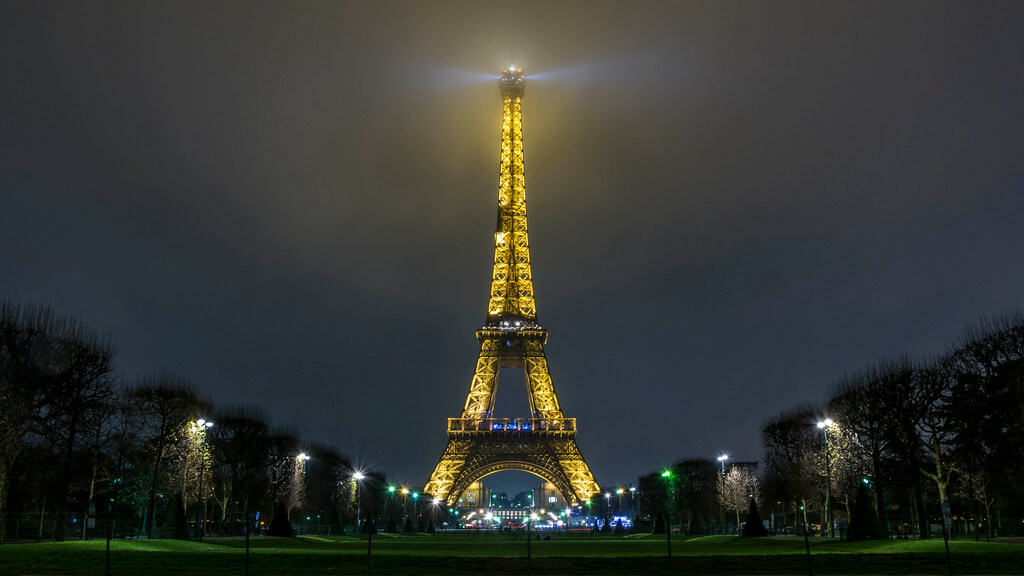
Enrique EKOGA – Classic Amsterdam
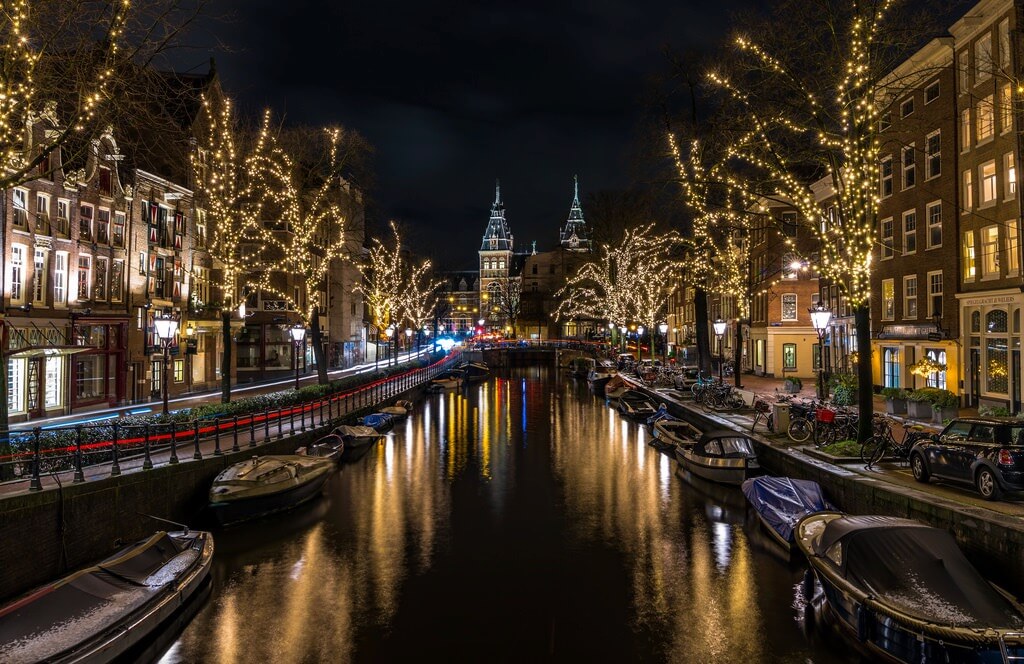
Bridges
Some cities have lovely bridges that are worth photographing by day and night. Others have bridges that are dull during the day but interesting at night, as their lights shine over the water. These “dull” bridges can be easy to miss if you’re only scoping out shooting locations during the day. If possible, try searching for locations at night as well, so you can pick up on these hidden beauties.
Shane Taremi – Leidsegraght Canal Bridge, Amsterdam
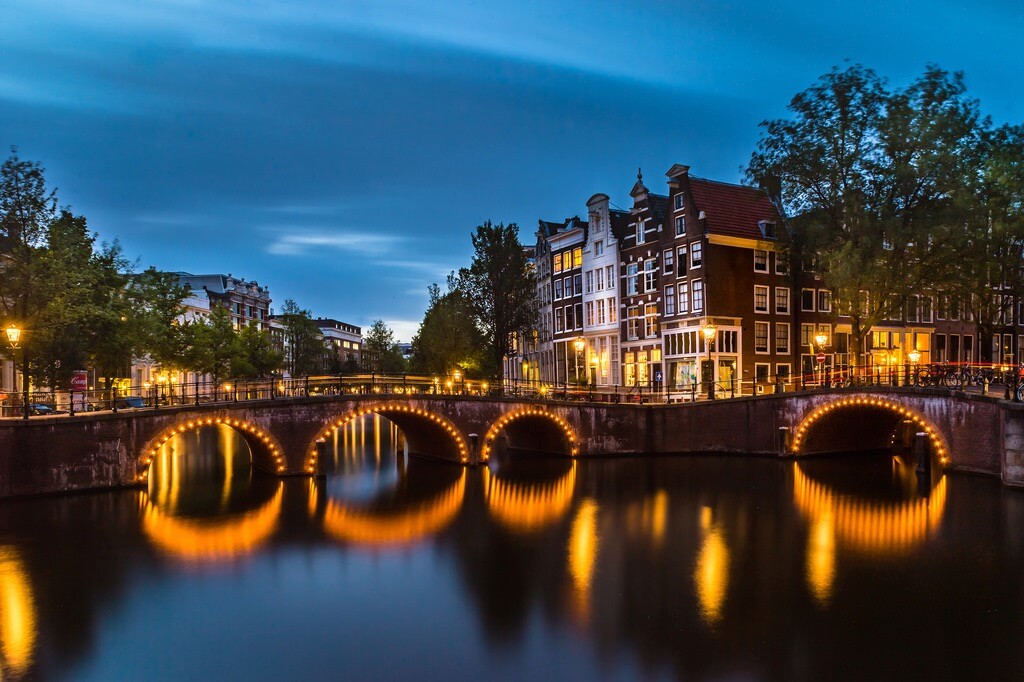
Lidija Bondarenko – Full Blue Moon by GW Bridge
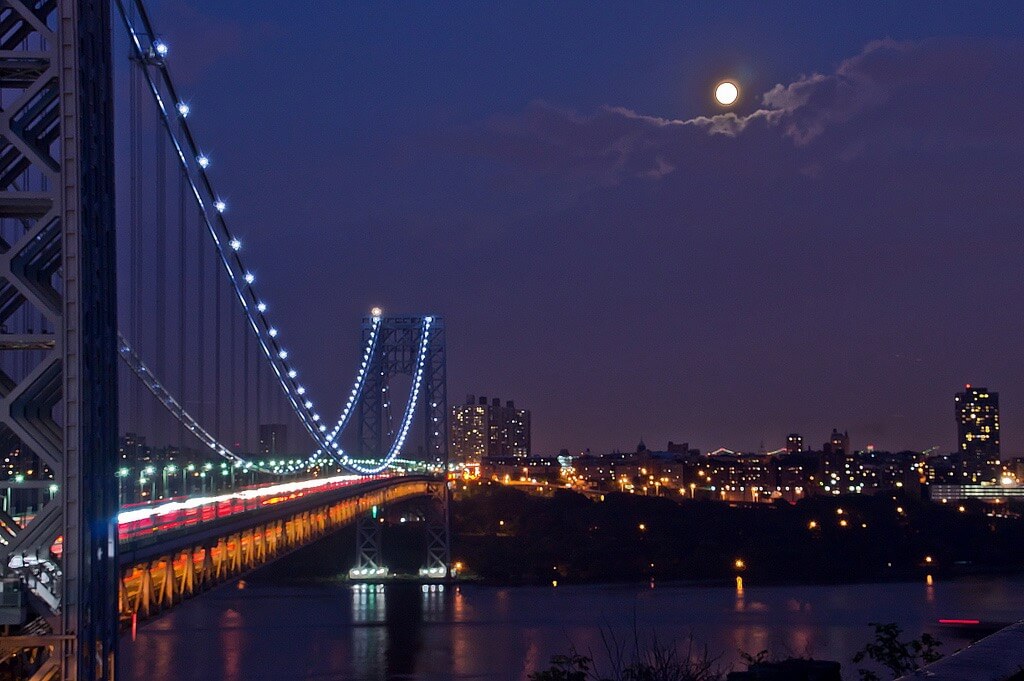
Wilson Silva – New and one at night
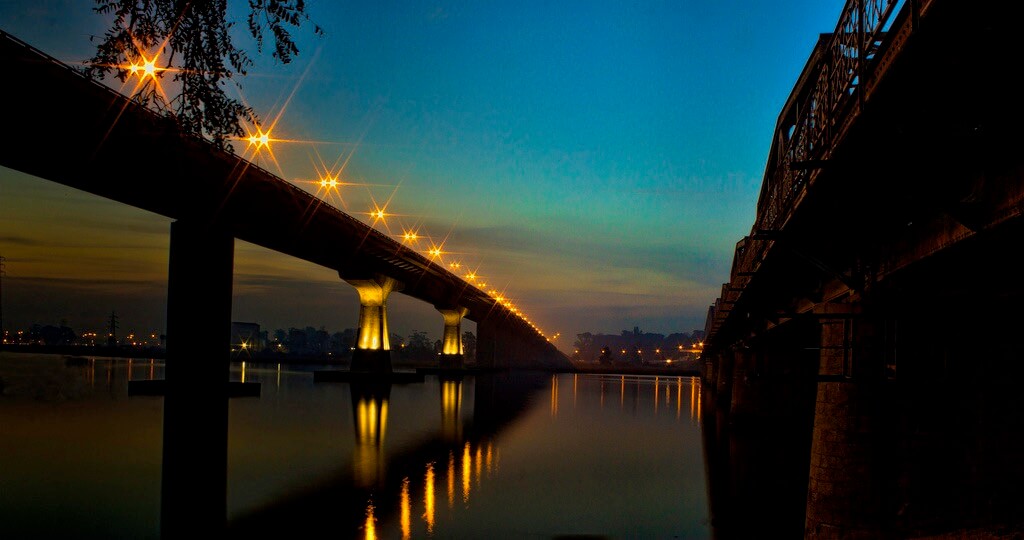
ilirjan rrumbullaku – Golden Gate Bridge After Dark
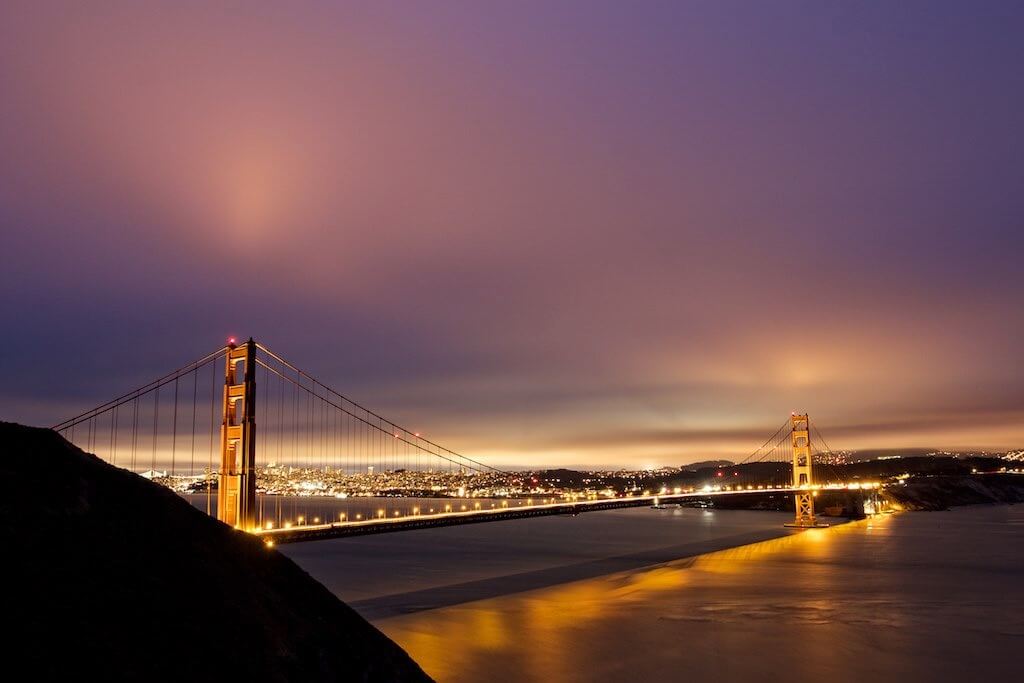
Ted – bay bridge night shot v2
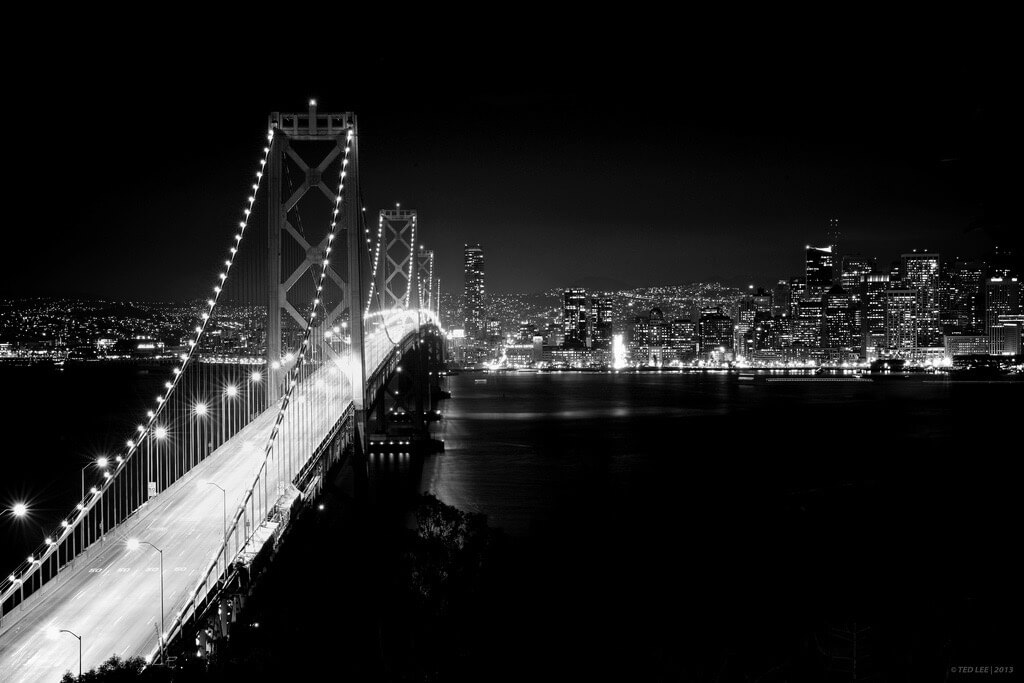
Night Sky
To get awe-inspiring astrophotography, photographers usually try to get away from cities and their light pollution. They might not even think about shooting the night sky in a city. After all, what’s there to shoot?
Light beams from the city, for starters, or the moon. On the right night, when the sky is clear and the moon is full, you can get incredible images. A super moon is even better, beaming its bright light over the city. But even on a moon-less night, you might see a few stars that could create cool light trails.
Shane Taremi – Full moon over Chicago!
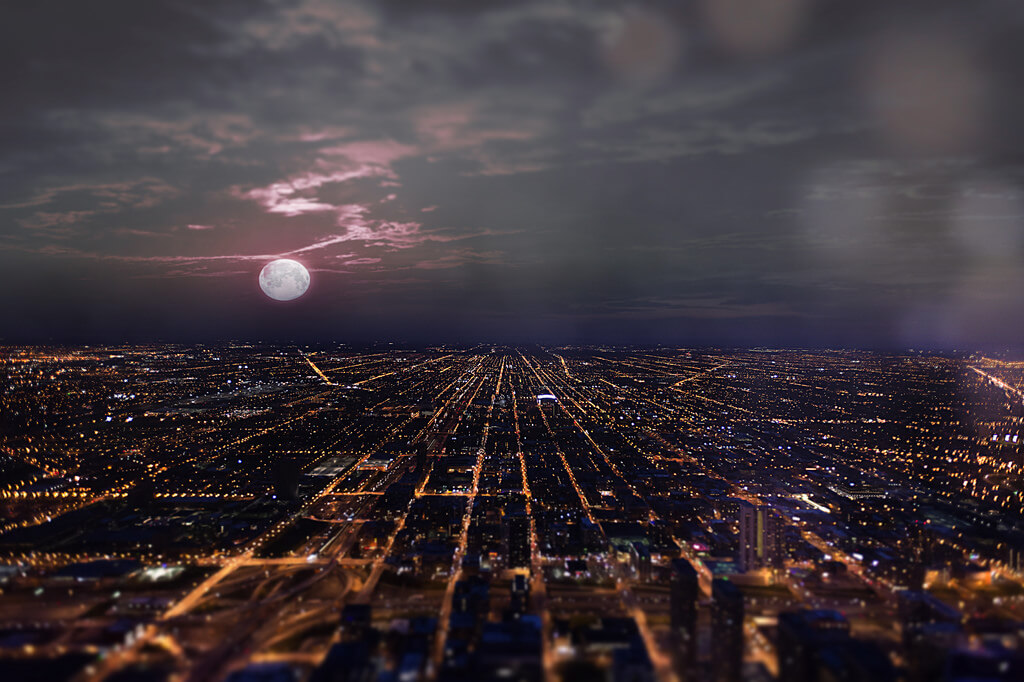
Christopher – Dreaming in Reality
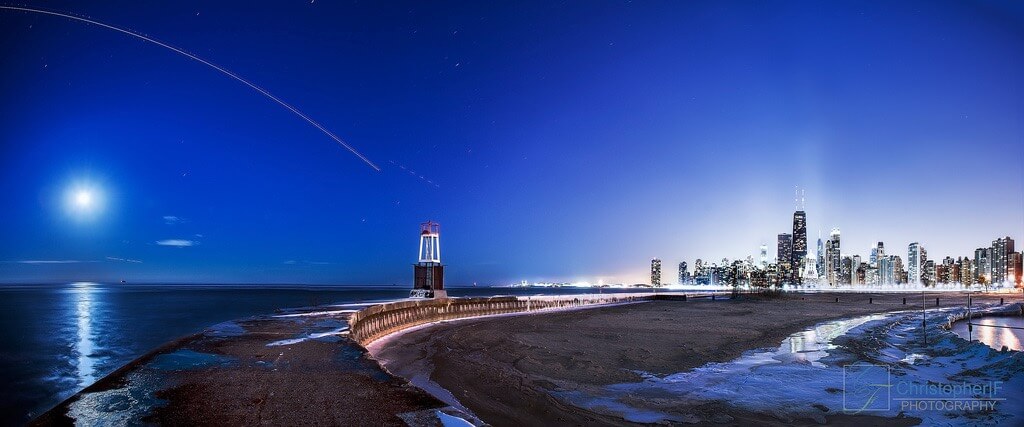
Rodney Campbell – Under the Stars
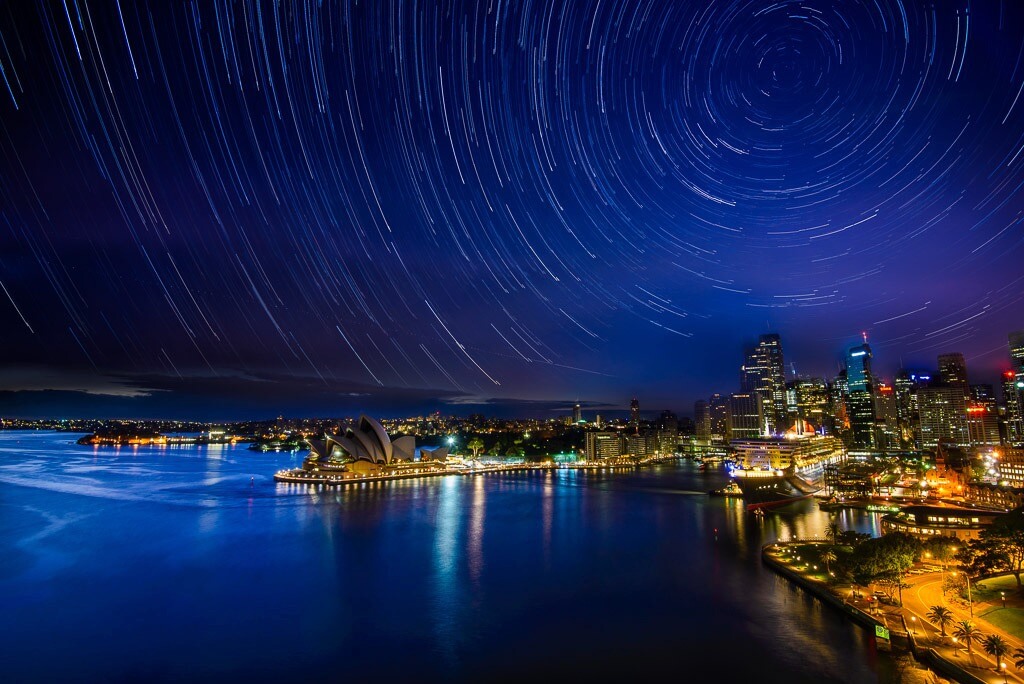
Lidija Bondarenko – Super Moon
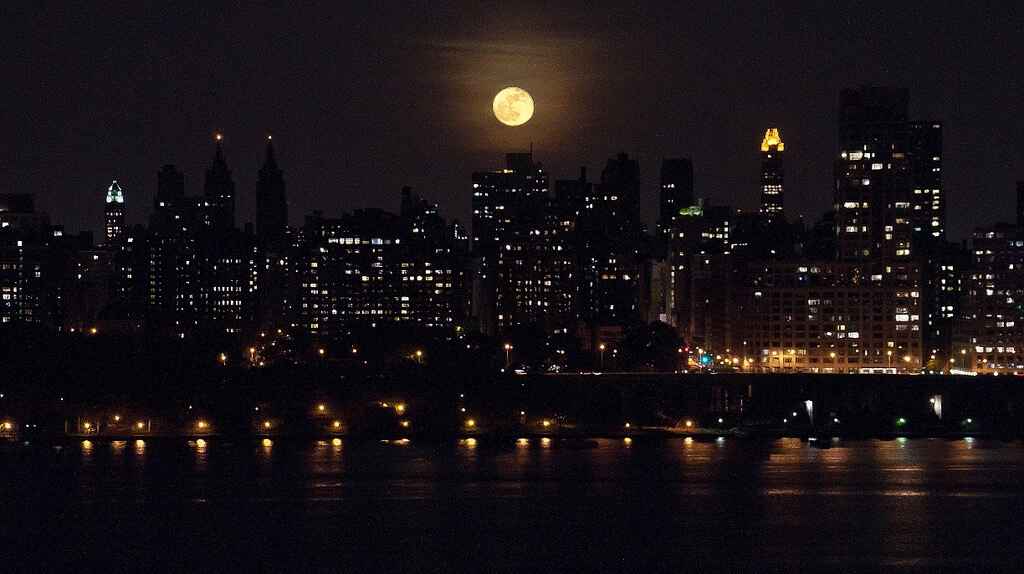
Lidija Bondarenko – Super Moon 2013 with Clouds
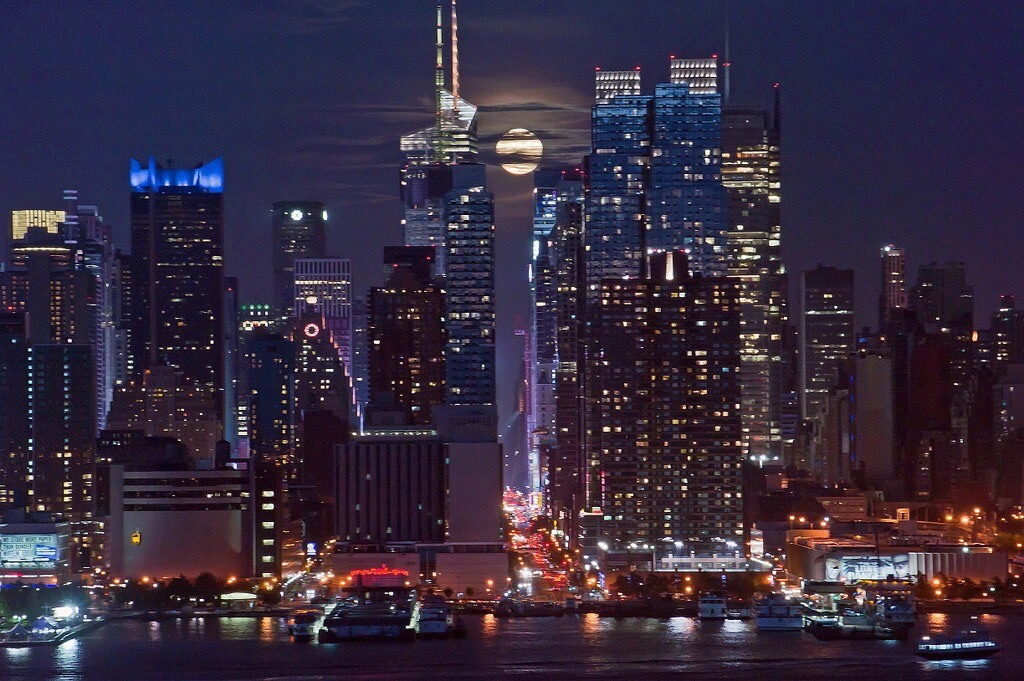
Lidija Bondarenko – Memorial 9-11-2014
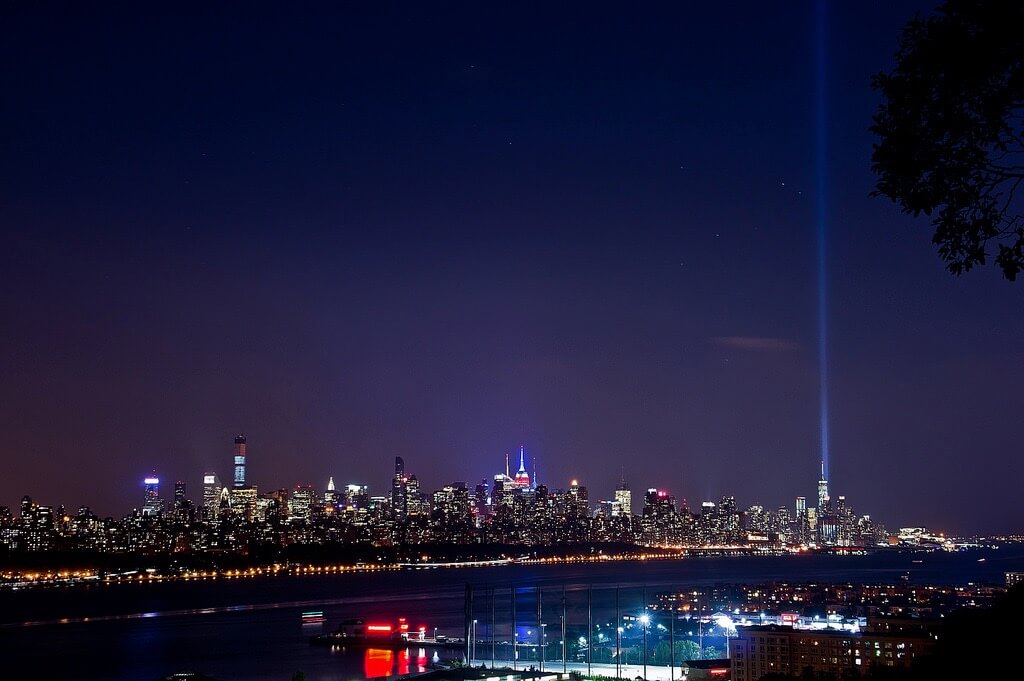
Reflected Light
One challenge of night photography can be trying to get enough light and color in your frame. Shooting at twilight, also known as the Blue Hour, can help solve this problem, but it’s not the only solution. You can also use water to boost the light and color of your photo. Simply shoot the city lights from across a lake, river, or canal, and you’ll immediately see the difference.
Thamer Al-Hassan – Dubai Sea Cityscape
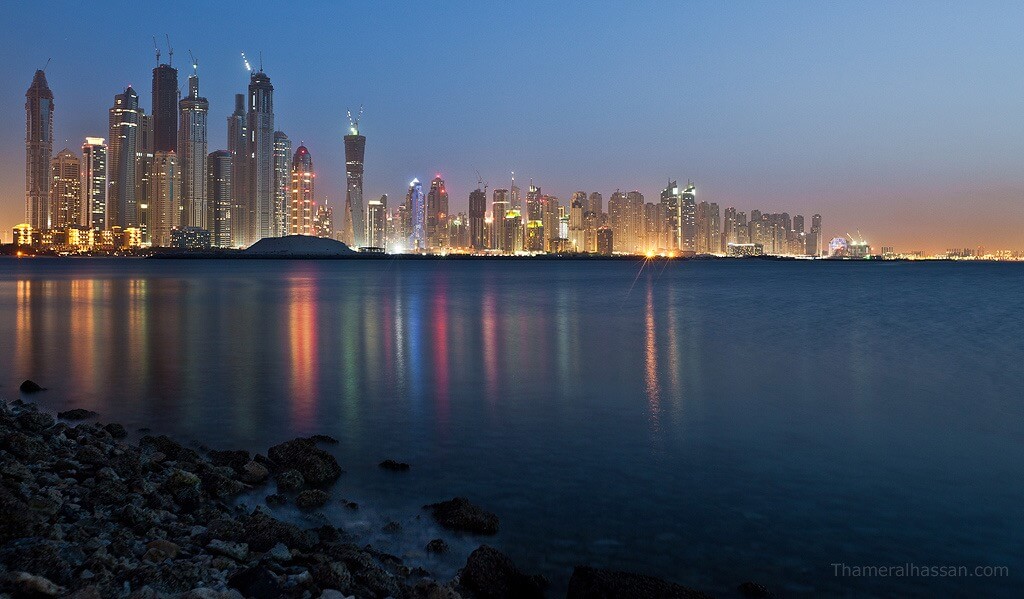
Lidija Bondarenko – Manhattan from Weehawken
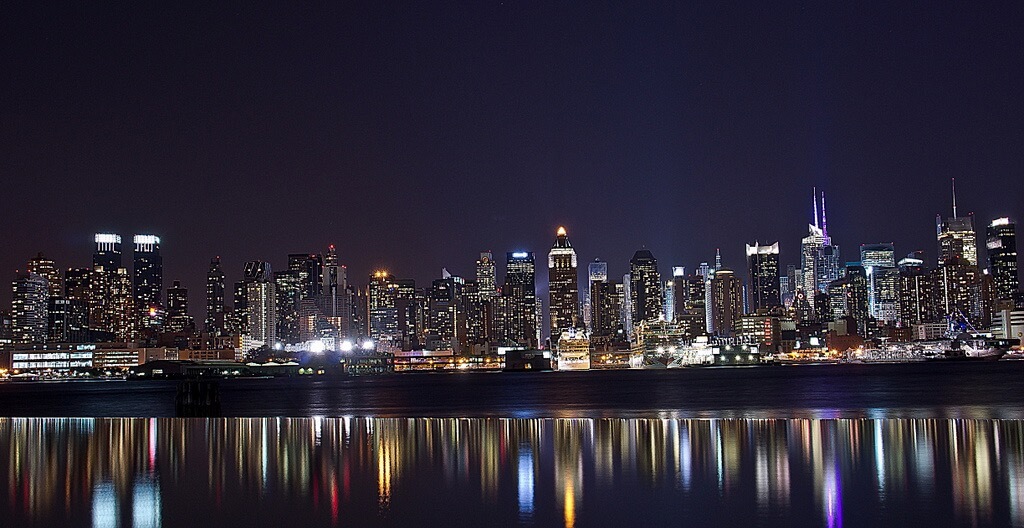
Enrique EKOGA – Another Classic Amsterdam
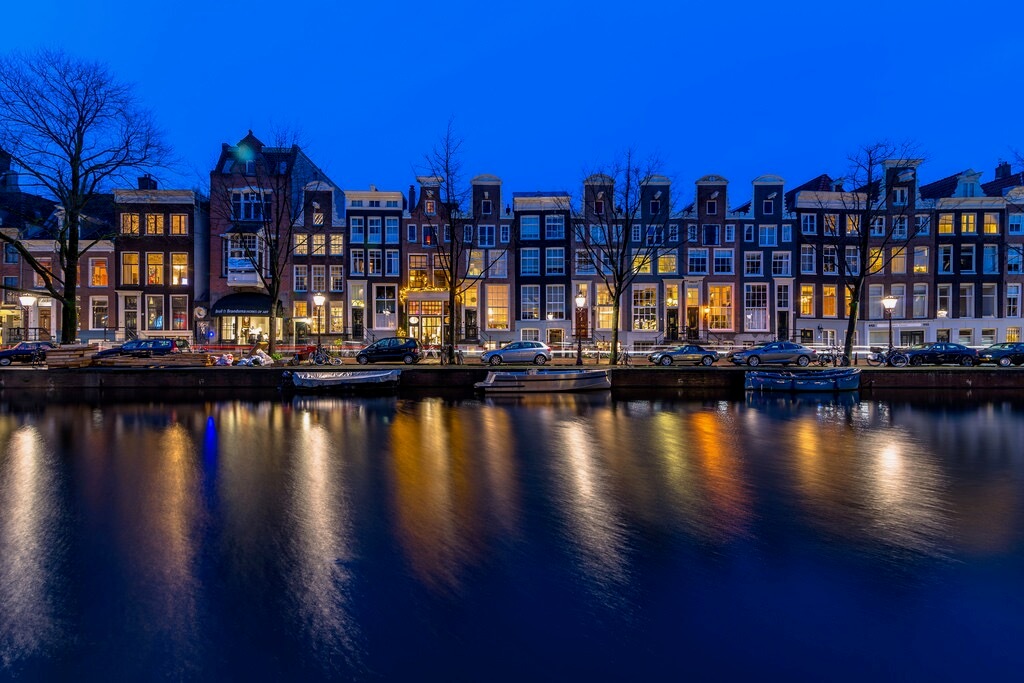
For more beautiful shots of city lights, check out these 34 magical photos of cityscapes at night.
